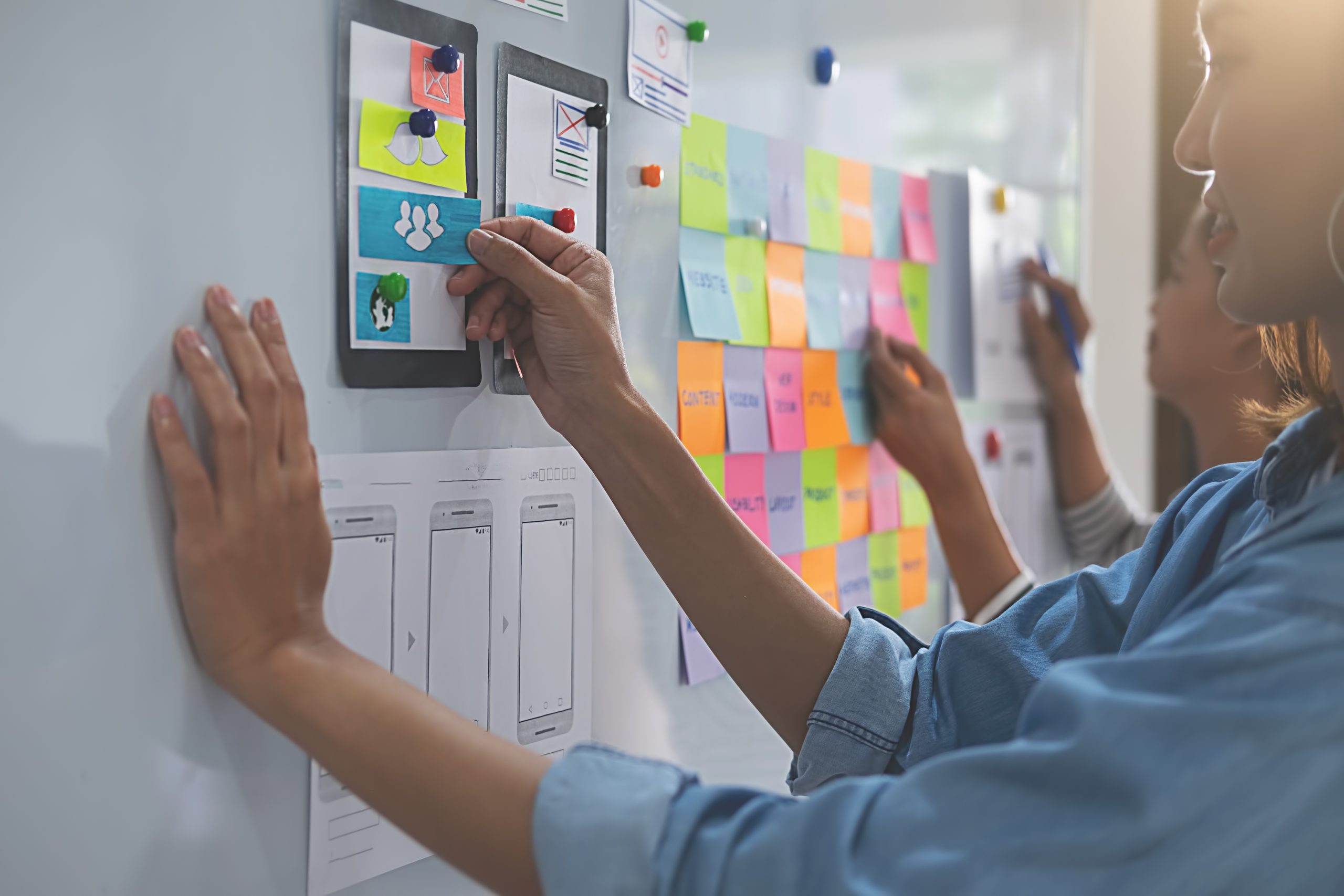Technology is developing at a phenomenal rate. New research methods enable us to understand our customers better and better. This leads us to improve our evaluation and analysis of products and services. The richness of experience we need to recognize in service design is truly complex and multidimensional. It is useful to look at them from various perspectives described in this article.
The immaterial and the intangible. Is everything a service today?
In an article about Service Design, Sarah Gibbson of Nielsen Norman Group writes about how the traditional economy has introduced boundaries between products and services. Products such as pens, sunglasses, or shoes can be touched and consumed. On the other hand, services are immaterial transactions that cannot be appropriated, e.g., public transport, medical treatment, and postal services.
Today, as we can read in the article, these boundaries have blurred and there is no longer a clear difference between these two categories. Instead, there is a huge space in between where a whole range of different combinations of products and services operate.
In my opinion, services in the case of Service Design are something on the edge of support and solution. Such a need arises when the customer wants to achieve a particular goal, for example, to buy a plane ticket.
What are the most significant differences in my opinion?
- First of all, services are immaterial. They are complex experiences. The result of such an experience is an individual and unique perception, which can be completely different among various social groups.
- Secondly, subjective perception makes services very difficult to measure.
- Thirdly, services cannot be stored and cannot be owned – which is the exact opposite of products.
BX, CX, EX, UX, SD – different perspectives of understanding the experience
While researching the topic of Service Design, I came across acronyms like BX, CX, and EX. As a UX Designer, I started wondering how they correspond to my profession. Do these disciplines: BX (Brand Experience), CX (Customer Experience), EX (Employee Experience) and UX (User Experience Design), and SD (Service Design) have an impact on each other, if yes, what kind of impact is it?
During my research, I came across very extreme opinions. Some claim that they are the same concept hidden under different names. Others, on the other hand, attach great importance to them and wonder how we have managed so far without these specializations.
Brand Experience (BX)
Brand Experience (BX) in theory, is the total experience we associate with a brand on an intellectual and behavioral level. The medium of BX is all elements of visual identity (logo, typography, architecture, packaging), advertising, and marketing. In practice, BX is the promise a brand makes to us. Brands such as Chanel, YSL, or Lancôme, promise us a sense of luxury, prestige, and uniqueness. Nike, on the other hand, tells us “Just do it” – you can do it, with us, sport is fun.
According to a study conducted by Columbia University, when consumers fill out the brand experience scale, they typically do not rate the ‘online’ consumer experience associated with the site where they can purchase the product. Consumers evaluate a brand using permanent memories that are stored in long-term memory. These memories are formed through repeated exposure to brand-related triggers. When asked about Nike, respondents answered that they feel like athletes when interacting with the products. Nike makes them think about how to live an active lifestyle. Nike makes them feel strong and inspires them to exercise.
Customer Experience (CX)
CX can be understood and considered in the context of offline and online customer experience. Customers, who have contact with both physical points of contact, such as packaging, a shelf in a store, a path in a museum, or a salesperson, and virtual points of contact, such as a website where they can buy a product, the process of adding to a shopping cart, the process of paying for a product and communication before the product is delivered by a courier company. CX in general is the customer experience that decides whether to buy a product or not.
Some people in the industry call CX the ‘new marketing’ because the previous marketing practices, which were mainly based on generating insights from hard data and surveys on large numbers of people, have been supplemented with qualitative research. This has helped to better connect with customers and understand their needs and expectations. To sum up, Customer Experience is the sum of experiences and emotions that a customer experiences before and after the purchase.
It is by the art of CX that one of our leading projects – the Multikino mobile app – was created. You can read more about this project on our blog in the article:
User Experience (UX)
In academic and industry literature, User Experience (UX), is considered in the context of any user experience when interacting with digital devices. One of the main tasks of UX is to design logical processes consistent with human thinking and natural user behavior. UX Designers deal with the what, how, why, and what of digital interaction in the shortest possible time. The most important part of a digital experience is usability. This means that the structure and purpose of the design are clear and easy to use. The interface is intuitive. UX is what is born in the user when they use a service or product. Let us look at the Bolt Food app as an example. A hungry user is an angry user. How do you design an experience that goes from hungry and angry to calmly waiting? You need to shorten the process as much as possible. Limit yourself to a few clicks. And for dessert, show the user the wait time and a map with information about where their delivery person is. There is nothing worse than not knowing how long the food will take to arrive!
Employee Experience (EX)
There is one last acronym left, EX, which stands for Employee Experience. The question that probably comes to your mind is, ‘What does this have to do with Service Design?’ Let’s answer it! Quite recently, it was discovered that employee experience translates into customer experience and user experience. In the past, only HR cared about employee well-being – explaining the importance of social benefits and all the perks that the company may or may not always offer. The last 15 years have been ground-breaking in the area of EX. It has shown that work is a critical aspect of our lives. Creating an environment where employees have a sense of belonging and feel valued and appreciated is a very important metric for many organizations.
Companies that work to develop EX find out that they can retain talented employees much easier. Satisfied employees are more productive employees, which translates into better products and services. An example? There are many. My favourite is the Friday off during the summer. It has been shown that a 4-day work week, translates into more relaxed, productive, and satisfied employees. Who would not want to take part in such an experiment?
Do all these disciplines influence each other? Of course, they do! The responsibilities of professionals in these fields may be different, but they all use qualitative methods to understand the needs and expectations of customers and users. And above all, to prevent frustration when using a service or product. There would be no good UX without a positive CX first. And CX and UX appear thanks to BX. In turn, BX is created by EX.
So, I think that the formula for good Service Design is
SD=EX+BX+CX+UX




